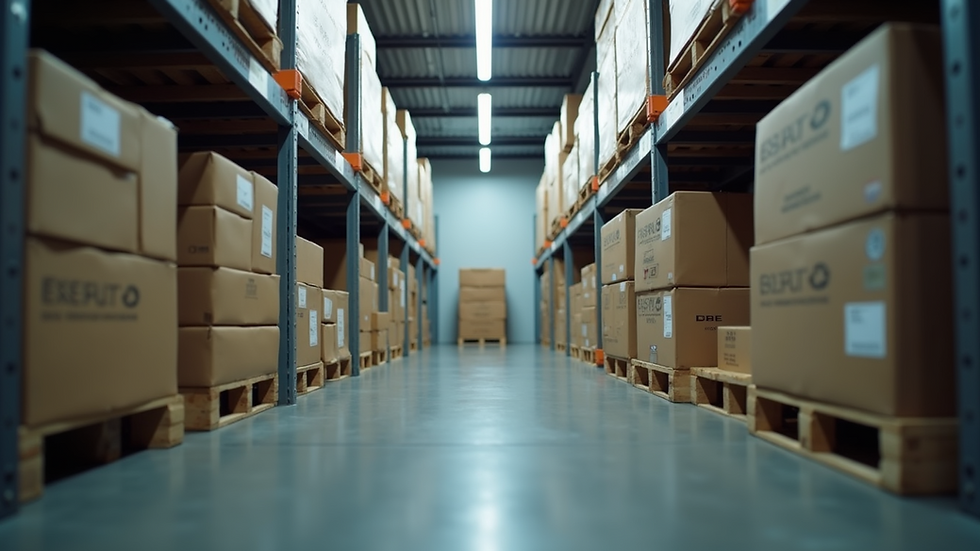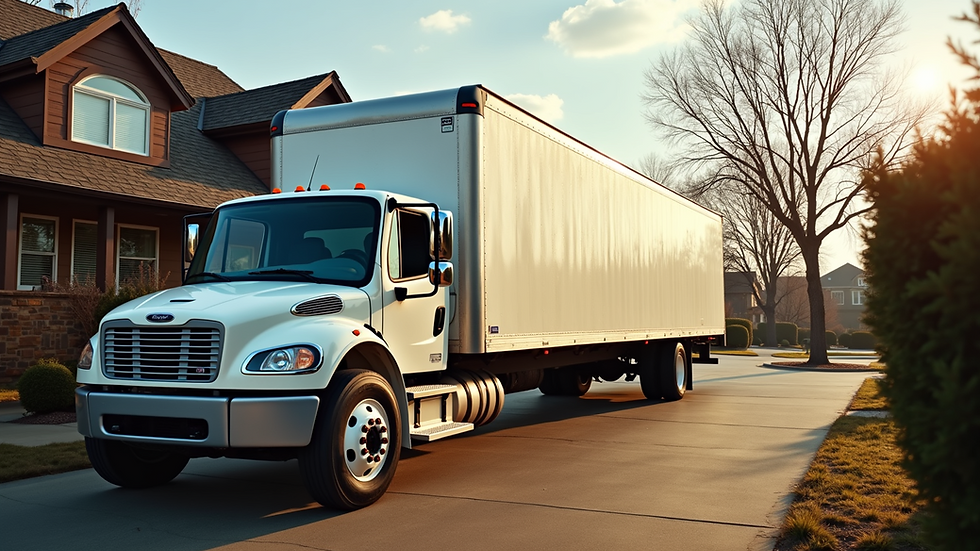Protect Your Belongings with Climate-Controlled Storage
- Jeff Lawrence
- 1 day ago
- 4 min read
When it comes to storing your valuable items, protecting them from damage is a top priority. Many people overlook the importance of the environment inside a storage unit, which can lead to costly damage over time. Temperature-regulated storage offers a reliable solution to keep your belongings safe from extreme heat, cold, humidity, and other environmental factors. This article explores why temperature-regulated storage is essential, what it means, and how it can benefit you.
Why Choose Temperature-Regulated Storage for Your Items?
Temperature-regulated storage units maintain a consistent environment that protects your belongings from temperature fluctuations and moisture. This is especially important for sensitive items such as electronics, wooden furniture, artwork, and important documents. Here are some key reasons to consider temperature-regulated storage:
Prevents Warping and Cracking: Wood and leather can warp or crack when exposed to extreme heat or dryness.
Protects Electronics: High temperatures and humidity can damage circuit boards and other components.
Preserves Paper and Photos: Important documents and photographs can yellow, fade, or become brittle without proper climate control.
Reduces Mold and Mildew: Consistent humidity levels prevent mold growth on fabrics, books, and other materials.
By choosing temperature-regulated storage, you ensure your items remain in the best possible condition, no matter the season.

Benefits of Temperature-Regulated Storage Units
Temperature-regulated storage units offer several advantages over traditional storage options. Here are some practical benefits that make them worth considering:
Consistent Temperature and Humidity
These units maintain a steady temperature, usually between 55°F and 85°F, and control humidity levels to prevent damage caused by moisture.
Extended Lifespan of Stored Items
By avoiding extreme conditions, your belongings last longer and retain their value.
Ideal for Seasonal Storage
Whether you’re storing winter clothes in summer or summer gear in winter, temperature-regulated units keep everything in optimal condition.
Peace of Mind
Knowing your items are protected from environmental damage reduces stress and worry.
Better Security and Cleanliness
Many temperature-regulated facilities also offer enhanced security features and cleaner environments.
If you want to protect your belongings effectively, investing in temperature-regulated storage is a smart choice.

What does "climate-controlled" mean in a storage unit?
The term "climate-controlled" refers to storage units that regulate both temperature and humidity to create a stable environment. Unlike standard storage units, which are exposed to outside weather conditions, climate-controlled units are typically located inside a building with insulation and HVAC systems.
Here’s what climate-controlled storage usually involves:
Temperature Regulation: The unit’s temperature is kept within a specific range to avoid extreme heat or cold.
Humidity Control: Moisture levels are monitored and adjusted to prevent mold, mildew, and rust.
Air Circulation: Proper ventilation helps maintain air quality and prevents stale or damp conditions.
This type of storage is perfect for delicate or valuable items that require extra care. For example, musical instruments, antiques, and electronics benefit greatly from climate-controlled environments.
If you want to learn more about the advantages of climate-controlled storage, check out this resource.

How to Choose the Right Temperature-Regulated Storage Unit
Selecting the right storage unit involves more than just picking a size. Here are some tips to help you find the best temperature-regulated storage for your needs:
Assess Your Items: Identify which belongings need temperature regulation. Fragile, valuable, or sensitive items should be prioritized.
Check Temperature and Humidity Ranges: Confirm the unit maintains a consistent environment suitable for your items.
Look for Security Features: Choose a facility with surveillance cameras, gated access, and good lighting.
Consider Location and Accessibility: Pick a storage facility close to your home or workplace for convenience.
Read Reviews and Visit the Facility: Customer feedback and a personal visit can reveal the quality of the storage environment.
By following these steps, you can ensure your belongings are stored safely and conveniently.
Tips for Packing and Storing Items in Temperature-Regulated Units
Proper packing is essential to maximize the benefits of temperature-regulated storage. Here are some actionable recommendations:
Use Plastic Bins Instead of Cardboard: Plastic containers protect against moisture better than cardboard boxes.
Wrap Furniture in Breathable Covers: Avoid plastic wrap that traps moisture; use cotton sheets or furniture covers.
Store Electronics in Original Packaging: If possible, keep electronics in their original boxes with protective foam.
Avoid Overpacking: Leave space between items for air circulation.
Label Everything Clearly: This makes it easier to find items without unnecessary handling.
Following these tips will help keep your belongings in excellent condition while in storage.
Temperature-regulated storage is a smart investment for anyone looking to protect their belongings from environmental damage. Whether you are storing seasonal items, valuable antiques, or sensitive electronics, choosing the right storage unit can make all the difference. By understanding what temperature regulation means, selecting the right facility, and packing your items properly, you can enjoy peace of mind knowing your possessions are safe and secure. For those interested in reliable options, exploring climate controlled storage facilities is a great place to start.




Comments